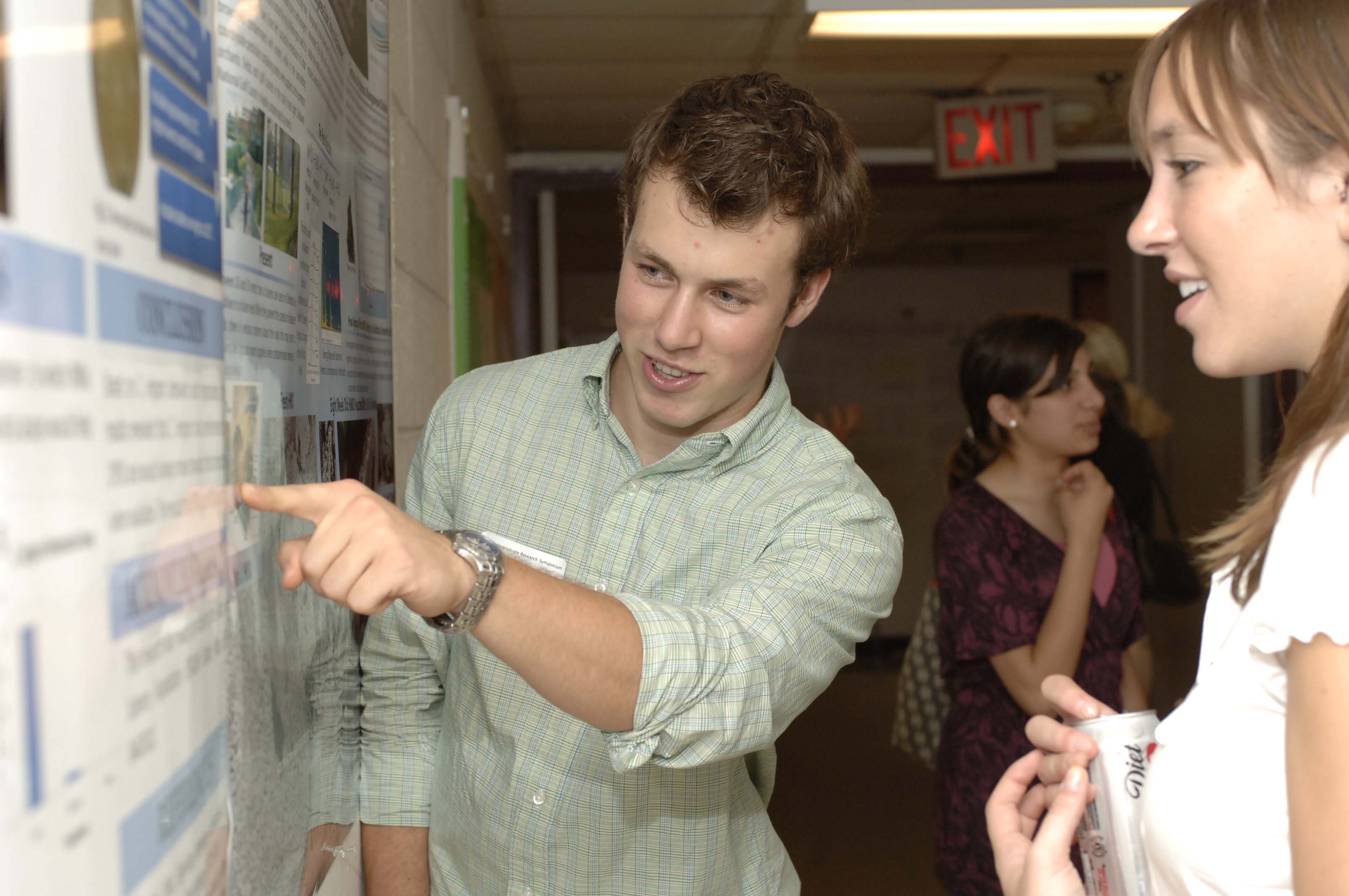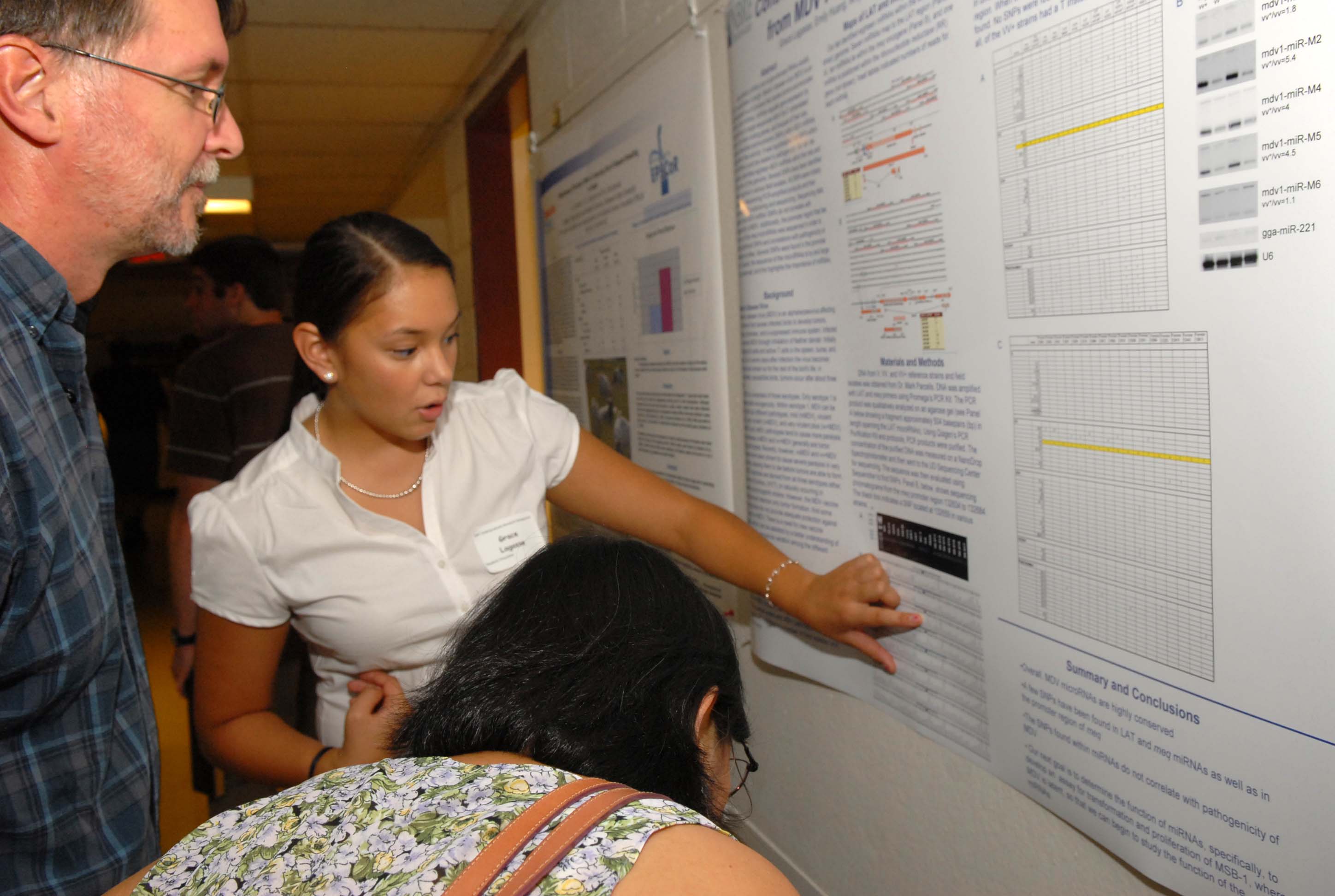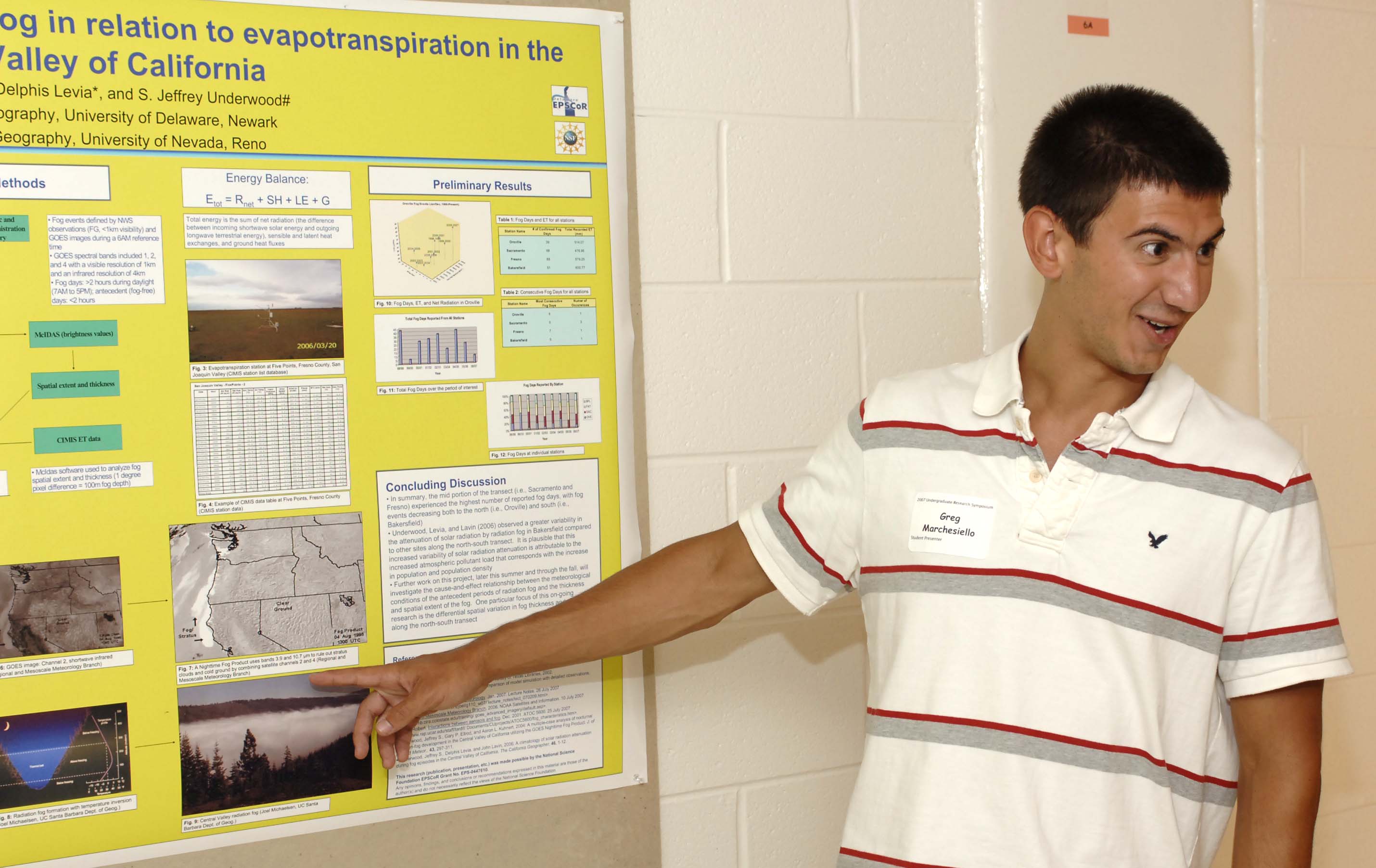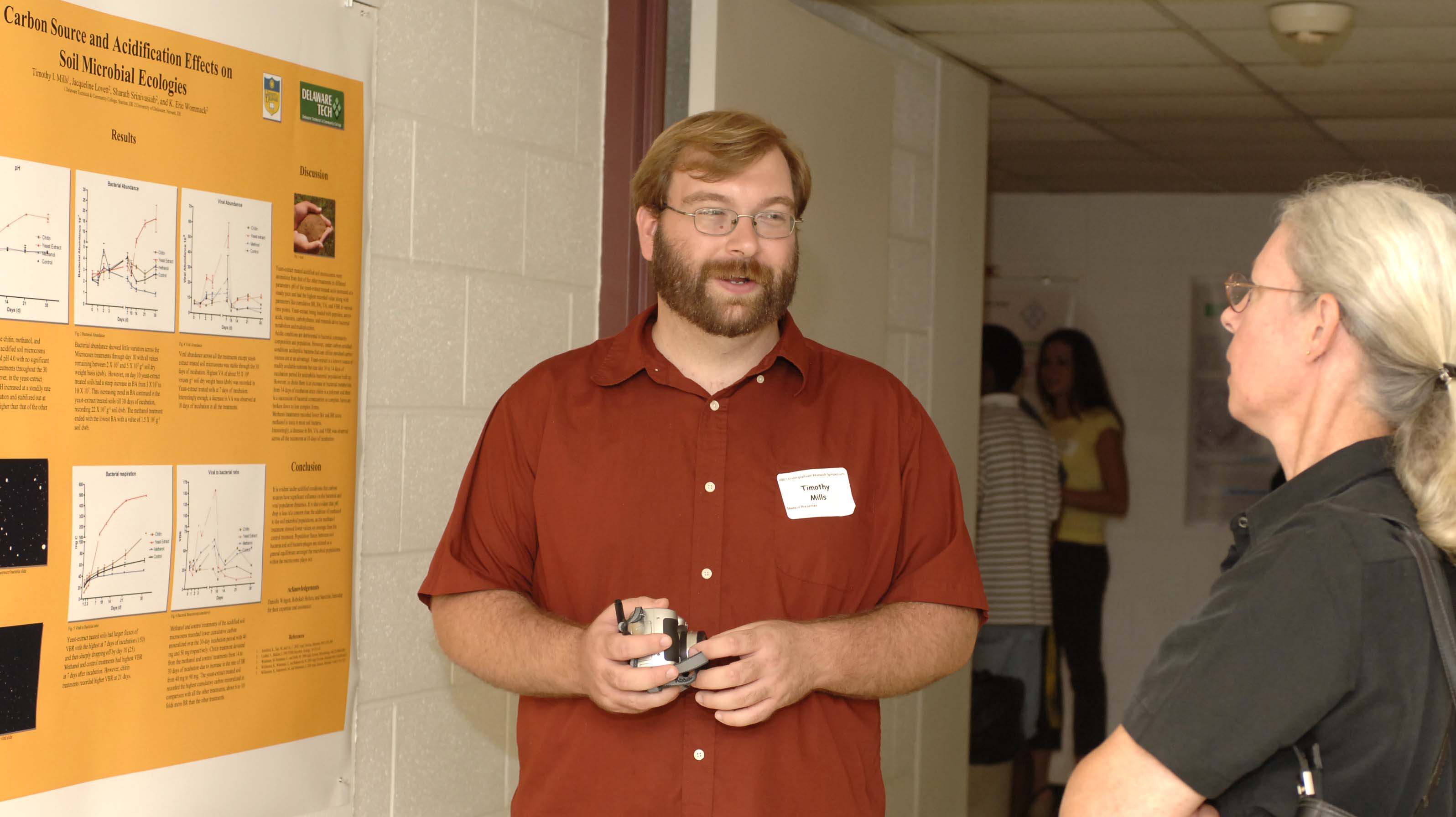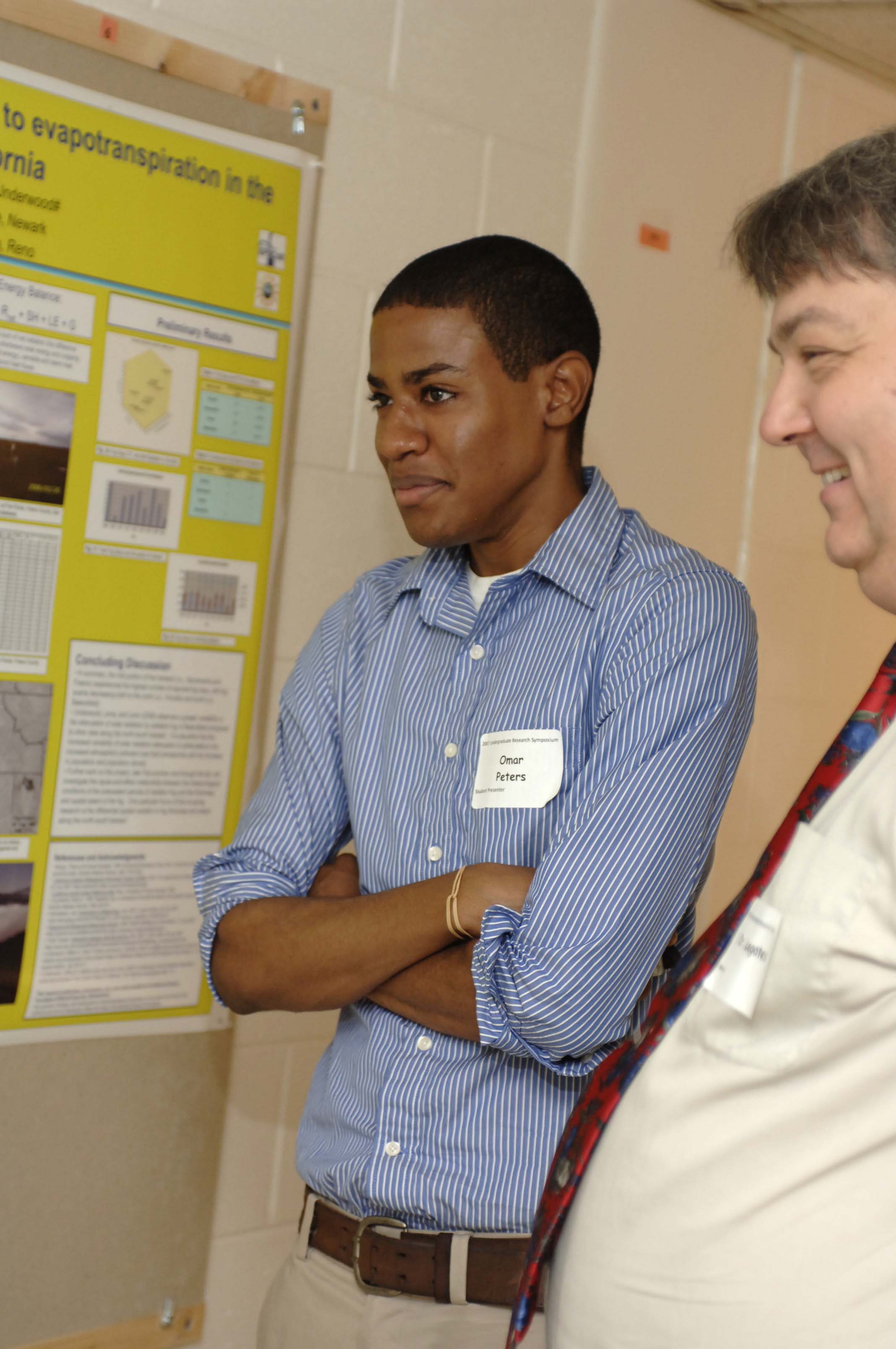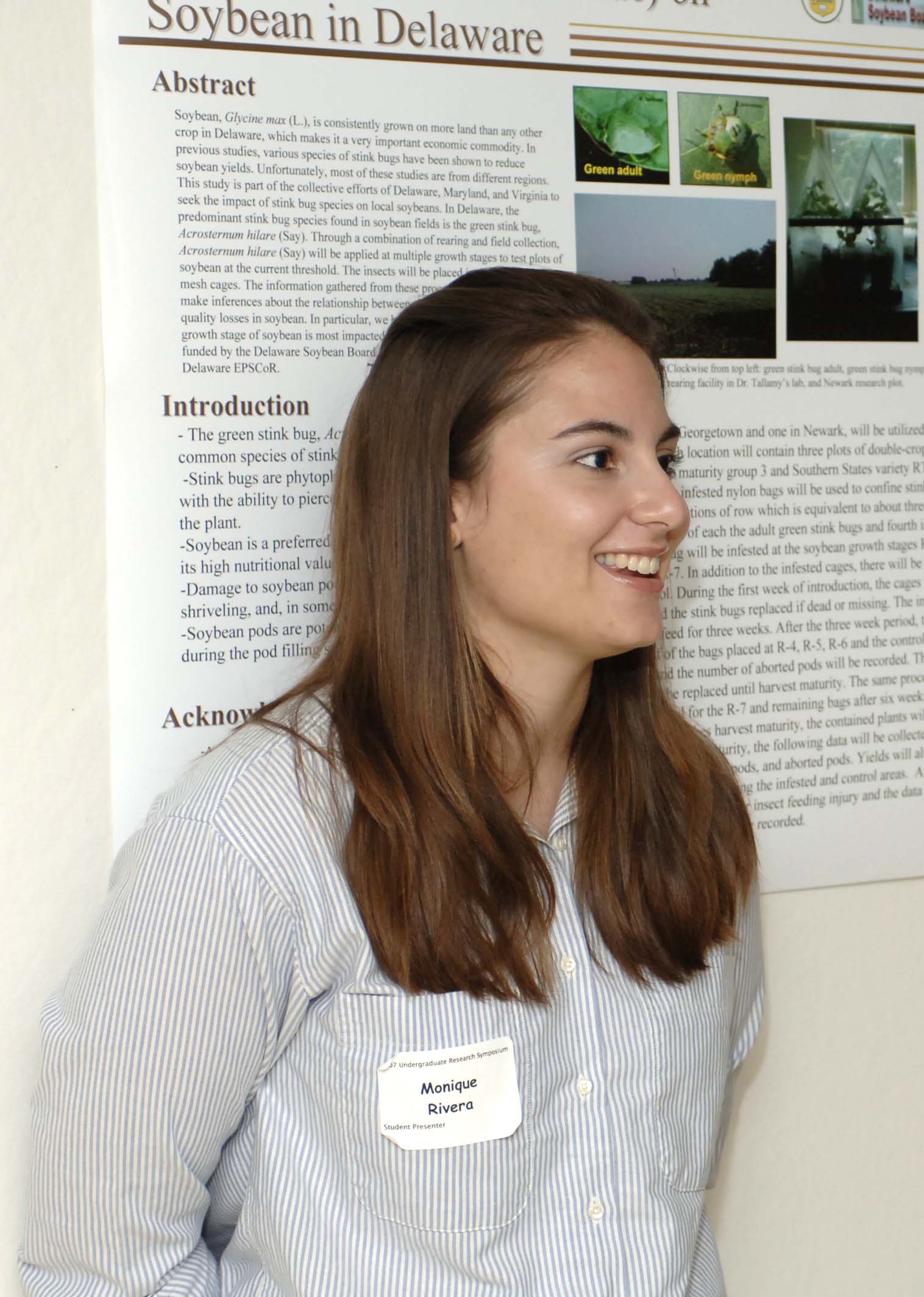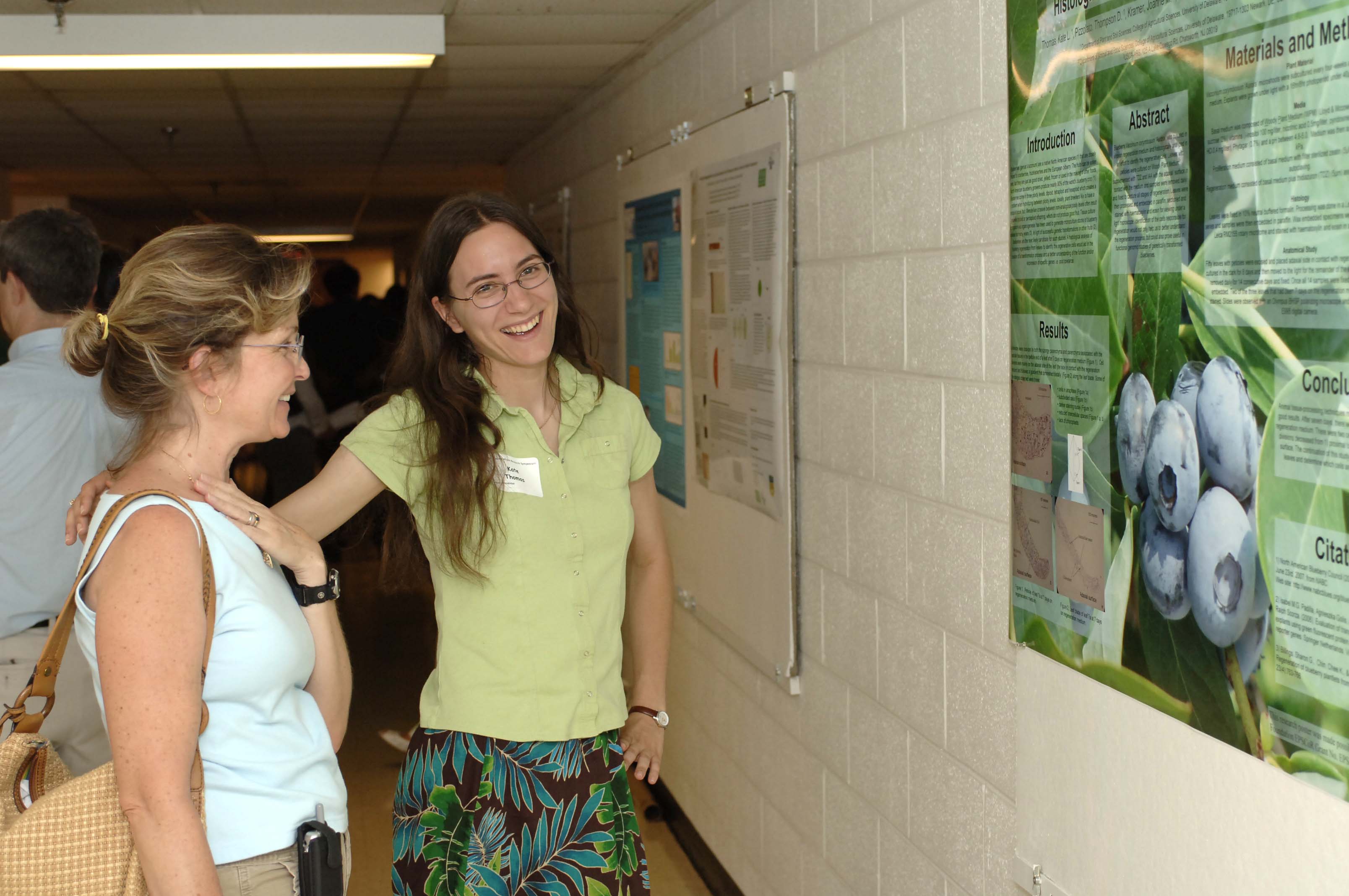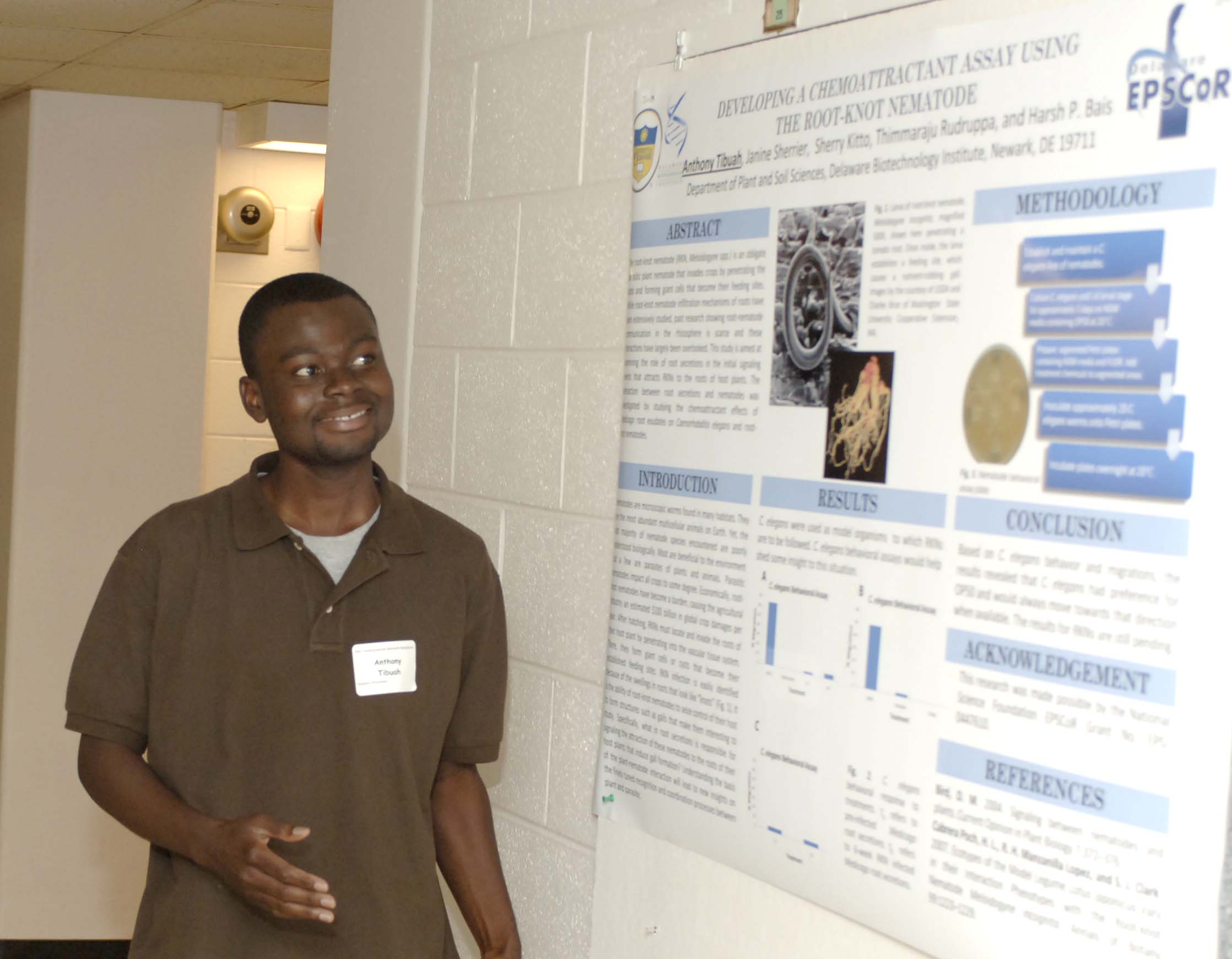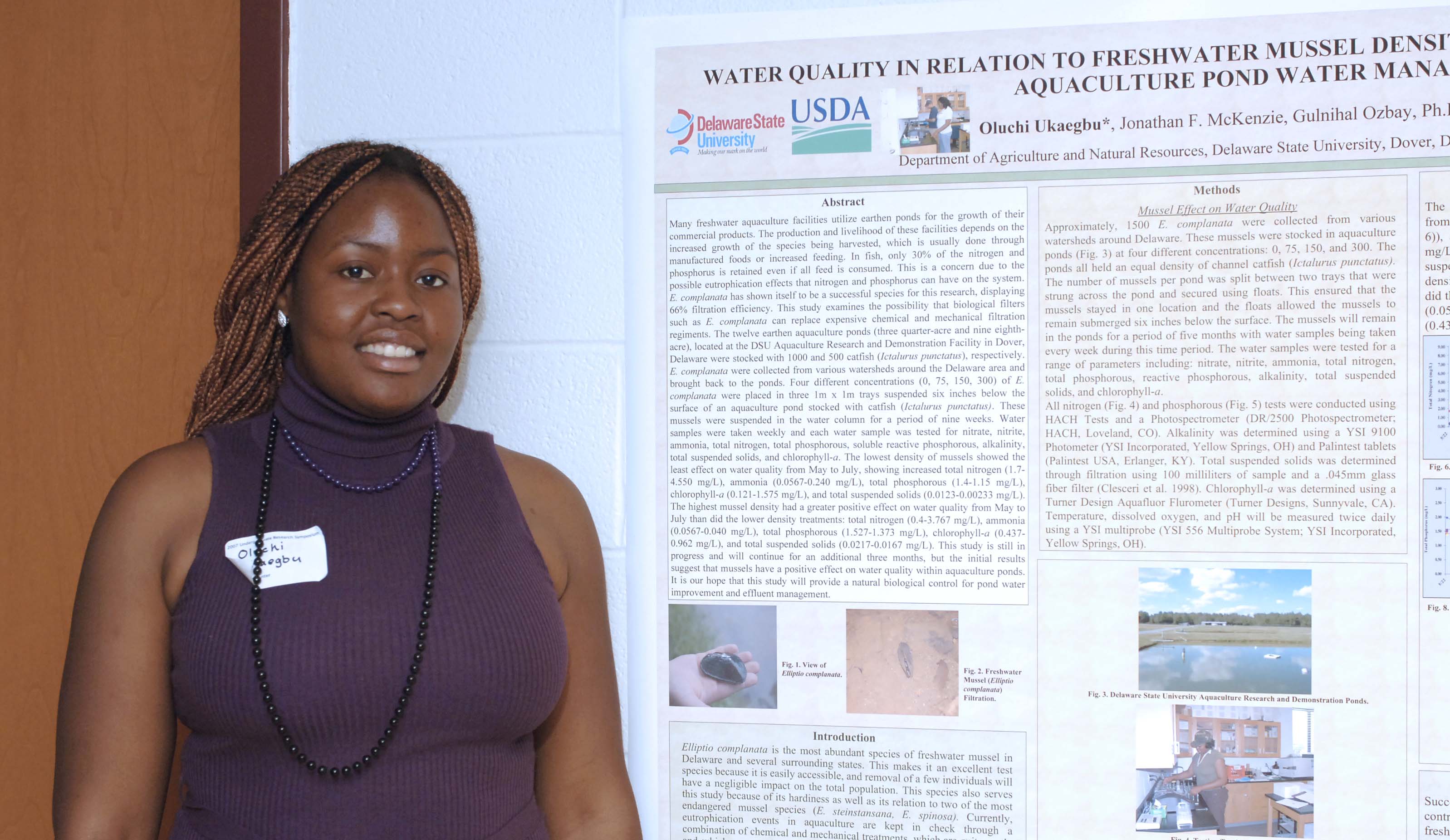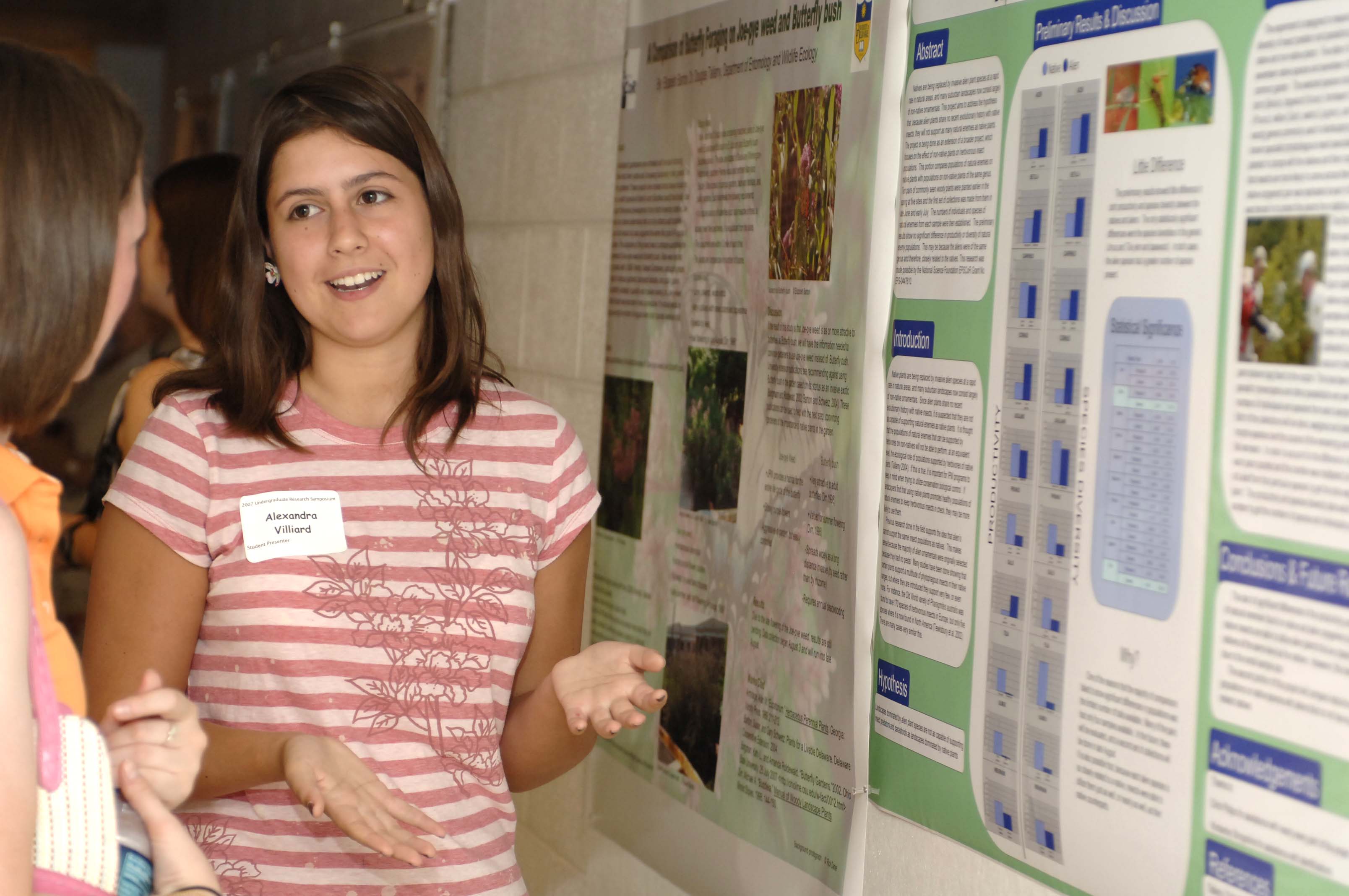Undergraduate Summer Research Symposium August 8, 2007
Ordered alphabetically by student's
last name
|
Jun binding protein p21 SNFT as a target for Meq oncogene function Vince Baldanza, Mark Parcells and Carl J. Schmidt Department of Animal and Food Sciences The Jun
family of transcription factors plays an important role in oncogenesis. One member of this gene family, Meq is
required for oncogenesis by Marek’s Disease Virus (MDV), which causes
T-cell
lymphoma in chickens. Another member of
the Jun family is the protein p21 SNFT (also known as Jun-binding
protein), which
functions as a negative regulator of the transcription activation
functions of
other Jun proteins. p21 SNFT inhibits
the function of other Jun proteins by binding and inhibiting their
ability to
activate transcription. One possible
mechanism by which Meq may cause tumors is by binding p21 SNFT, thereby
freeing
the cellular Jun proteins to stimulate cellular growth.
To test this hypothesis, we have set out to
clone the chicken p21 SNFT cDNA by PCR and ultimately test the ability
of Meq
protein to bind the p21 SNFT protein. Currently, we are testing
different
primer combinations and different sources of mRNA in an effort to clone
p21
SNFT. Supported by USDA grant. |
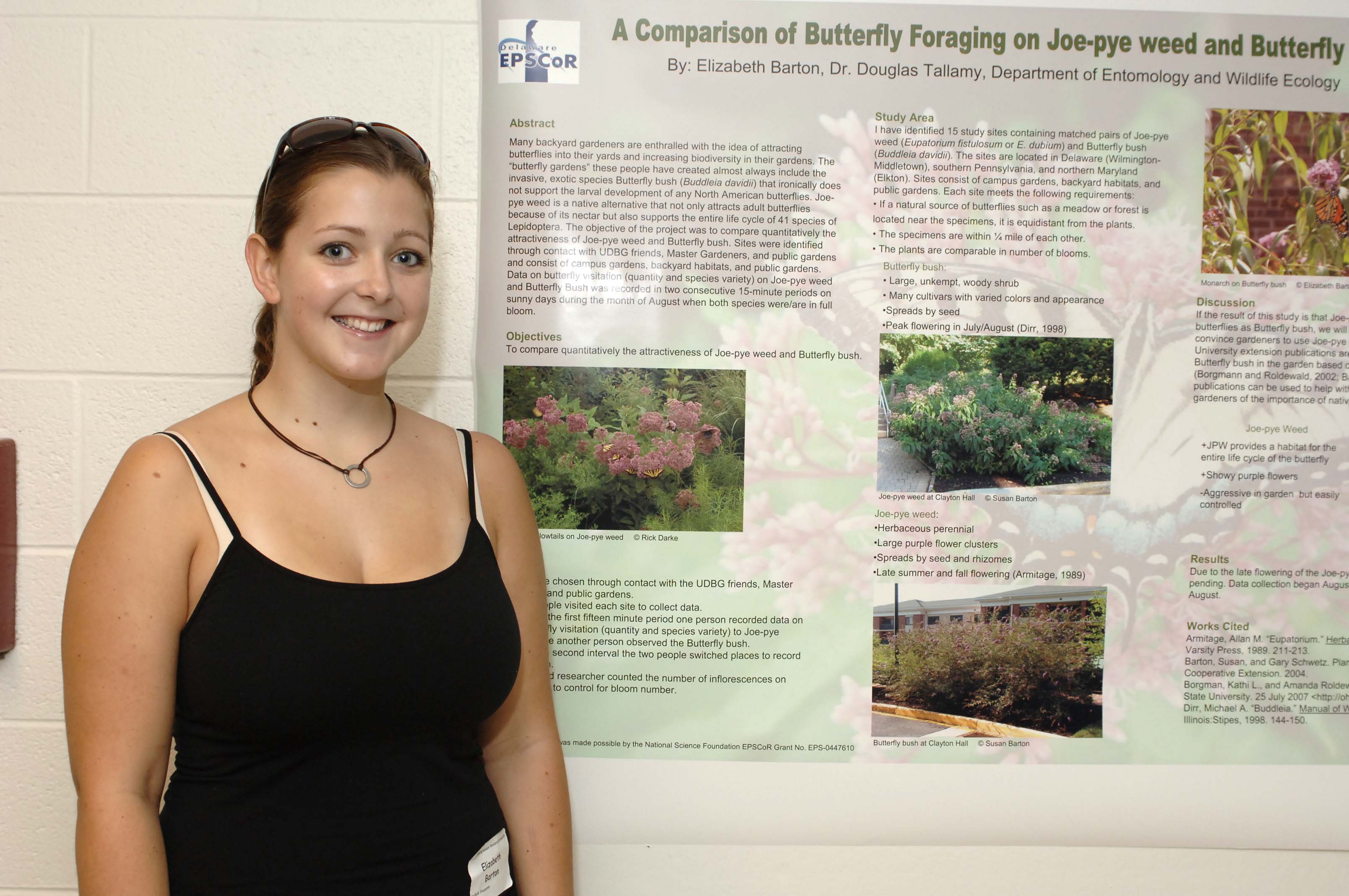 A Comparison of Butterfly Foraging on Joe-pye weed and Butterfly bush Elizabeth Barton and Douglas Tallamy Department of Entomology and Wildlife Conservation Many backyard gardeners are enthralled with the idea of attracting butterflies into their yards and increasing biodiversity in their gardens. The “butterfly gardens” these people have created almost always include the invasive, exotic species Butterfly bush (Buddleia davidii) that ironically does not support the larval development of any North American butterflies. Joe-pye weed is a native alternative that not only attracts adult butterflies because of its nectar but also supports the entire life cycle of 41 species of Lepidoptera. The objective of the project was to compare quantitatively the attractiveness of Joe-pye weed and Butterfly bush. Sites were identified through contact with UDBG friends, Master Gardeners, and public gardens and consist of campus gardens, backyard habitats, and public gardens. Data on butterfly visitation (quantity and species variety) on Joe-pye weed and Butterfly Bush was or will be recorded in two consecutive 15-minute periods on sunny days during the month of August when both species were/are in full bloom. Research was funded by EPSCoR. |

